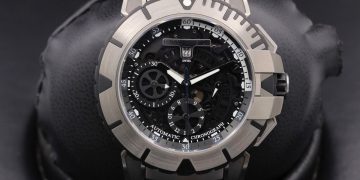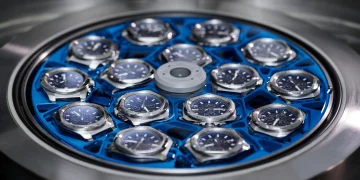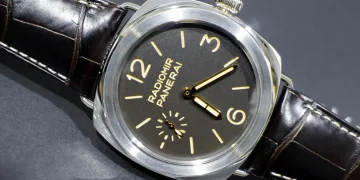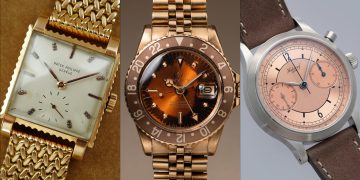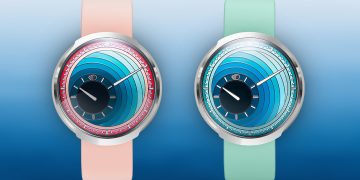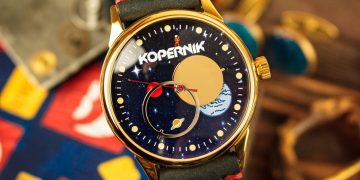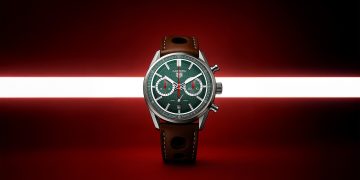Introduction: Understanding Perpetual Calendar Watches
- Overview of Perpetual Calendar Complications: Explain what a perpetual calendar is — a watch complication that can automatically adjust to the varying lengths of months and leap years without needing manual correction.
- Importance of Perpetual Calendar Watches: Highlight why perpetual calendars are considered a pinnacle of watchmaking. They reflect the mastery of horological craftsmanship, combining both artistry and technical innovation.
- Historical Significance: Briefly mention the evolution of perpetual calendars and why they are still highly coveted by watch enthusiasts and collectors.
1. The Craftsmanship Behind Perpetual Calendar Watches
- The Role of Watchmaking Mastery: Discuss the expertise required to design and assemble a perpetual calendar movement. Explain how skilled craftsmanship contributes to the precision of these timepieces.
- Designing the Movement: The process of designing a perpetual calendar movement is intricate and labor-intensive. Describe how watchmakers integrate multiple gears, cams, and levers to ensure the watch adjusts to the changing days of months and leap years.
- Hand-finishing Techniques: Elaborate on how finishing is integral to the movement’s beauty and durability. This includes polishing, anglage (beveling), perlage (circular graining), and Côtes de Genève (Geneva Stripes).
- The Art of Dial Layout: Perpetual calendars often have complicated dial layouts due to the number of features they need to display. This includes not only the date and day of the week but also the month, leap year cycle, and sometimes a moonphase complication.
2. The Technology Behind Perpetual Calendar Watches
- Understanding the Mechanics of Perpetual Calendars:
- The heart of the perpetual calendar: Explore the gearwork behind the mechanism, which adjusts automatically for months with fewer than 31 days and leap years.
- Components: Discuss the key components involved, including date wheels, month cams, leap year indicators, and jumping date mechanisms.
- Interlocking Movements: The perpetual calendar mechanism works through interlocking movements that are carefully calibrated to adjust the date, day, and month without requiring external input.
- Precision Engineering:
- Tolerances and Accuracy: Discuss the level of precision required to ensure that the watch keeps track of time accurately and adjusts correctly across varying months and leap years. Highlight how tolerances in manufacturing need to be incredibly tight.
- Materials: Explain the importance of selecting the right materials in ensuring the durability and longevity of a perpetual calendar watch. Talk about high-grade alloys, ceramics, and sapphire crystals used in the construction of these timepieces.
- Energy Efficiency: Perpetual calendars consume minimal energy to perform their automatic adjustments. Discuss the technical innovations that ensure this efficiency, such as micro-engines and innovative springs.
- Additional Complications: Discuss how the moonphase, chronograph, or tourbillon complications are often integrated with perpetual calendars. Explain the challenge of incorporating additional complications while maintaining the accuracy of the perpetual calendar feature.
3. The Challenge of Creating a Perpetual Calendar Watch
- The Complexity of Integration: Explore the challenge of integrating the perpetual calendar complication into a traditional watch. Talk about how the movements of the date, day, and month must interlock smoothly without compromising accuracy.
- Balancing Functionality with Design: Watchmakers must balance the complicated movement with an elegant design that doesn’t overwhelm the user. Discuss the challenges of visibility and readability on a dial that displays so many different pieces of information.
- Durability and Reliability: Discuss the stress perpetual calendars face during normal wear and how watchmakers ensure that these intricate movements remain reliable over time. This includes how the technology handles shocks, wear, and tear.
4. Iconic Perpetual Calendar Watch Movements
- Patek Philippe’s Caliber 240 Q: Discuss this iconic movement and its groundbreaking design. Explain how Patek Philippe achieved an ultra-thin movement with a perpetual calendar function.
- A. Lange & Söhne’s Caliber L922.1: Dive into this German brand’s remarkable movement. Explain its engineering, with its four-day power reserve, and how it tracks the leap year and the 31-day months.
- Vacheron Constantin’s Caliber 1120 QP: Examine the Vacheron Constantin perpetual calendar and how the brand’s engineering and design have made it a favorite among watch collectors.
- Rolex Cellini Moonphase: Although not as complex as some other perpetual calendars, discuss how Rolex’s version incorporates moonphase tracking along with its calendar function.

5. Materials and Innovations in Perpetual Calendar Watches
- Innovative Materials: The use of high-tech materials like titanium, ceramics, and advanced alloys has allowed watchmakers to create more durable, lighter, and scratch-resistant perpetual calendars.
- Swiss vs. German Watchmaking: Examine how different cultures and watchmaking traditions approach the perpetual calendar. Discuss Swiss craftsmanship, often associated with elegance and heritage, versus German engineering, known for its precision and technical prowess.
- Advancements in Technology: Touch on recent innovations, such as smart perpetual calendar watches, and how brands are adapting to modern technology while maintaining traditional watchmaking craftsmanship.
6. The Process of Assembling a Perpetual Calendar Watch
- From Concept to Reality: A deep dive into the watchmaking process for a perpetual calendar. Discuss the steps involved in designing, manufacturing, assembling, and testing a watch. Describe the role of CAD software and 3D printing in modern watchmaking and how traditional methods still play a major role.
- Handcrafting vs. Automation: Explore the balance between handcrafting certain components (like finishing the case or polishing the movement) and the use of automation for mass production.
7. The Role of Perpetual Calendar Watches in Watchmaking History
- Patek Philippe’s Legacy: Examine Patek Philippe’s role in the development and popularization of perpetual calendars, with models like the Patek Philippe Grand Complication Ref. 5327.
- The Significance of Complications: Discuss how perpetual calendars are often considered a status symbol for collectors. Delve into their legacy within watchmaking and why they have become a hallmark of fine watchmaking.
8. Maintaining and Servicing Perpetual Calendar Watches
- Complexity of Maintenance: Highlight the unique challenges involved in maintaining a perpetual calendar watch. Explain the specialized care required, including servicing intervals, adjustments, and calibration.
- Role of Watchmakers: Watchmakers must possess a unique set of skills to work on perpetual calendar watches due to their intricate movements. Discuss how these movements are often reserved for highly skilled horologists.
- Cost of Servicing: Explore the cost of maintenance and servicing for perpetual calendar watches, including the specialized equipment required and the time involved in servicing these watches.
9. The Future of Perpetual Calendar Watches
- Technological Advancements: Discuss how the future of perpetual calendars may evolve with the integration of new technologies such as smart watches, hybrid models, or integrated complications.
- Will Perpetual Calendars Be Replaced by Digital Technology?: Explore the role of digital technology and whether traditional perpetual calendar watches will continue to have relevance in an increasingly digital age.
- Sustainability and Innovation: How watchmakers are incorporating sustainability into the production of high-end perpetual calendar watches without sacrificing craftsmanship or innovation.
Conclusion: The Enduring Appeal of Perpetual Calendar Watches
- Timelessness of Craft and Technology: Reflect on the balance between craftsmanship and cutting-edge technology in perpetual calendar watches, which continue to capture the hearts of collectors and enthusiasts.
- Why Collectors Value Them: Reiterate the reasons why perpetual calendars are valued in the watchmaking world, from their precision to the heritage they represent.
- Future Trends: Consider how perpetual calendars might evolve in the coming years, but also how their timeless appeal will likely keep them relevant in horology for many years to come.



